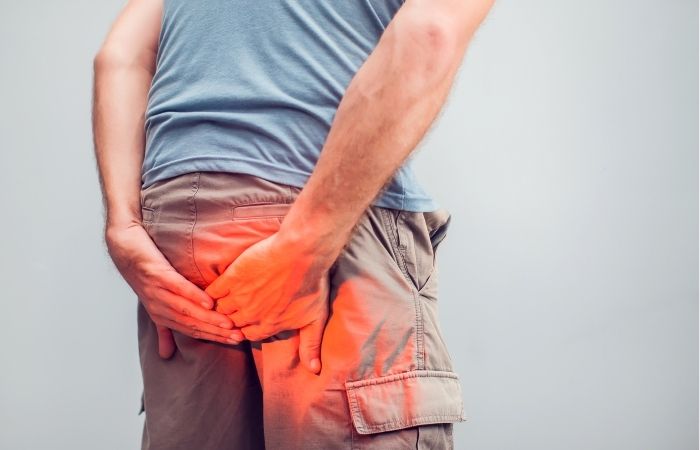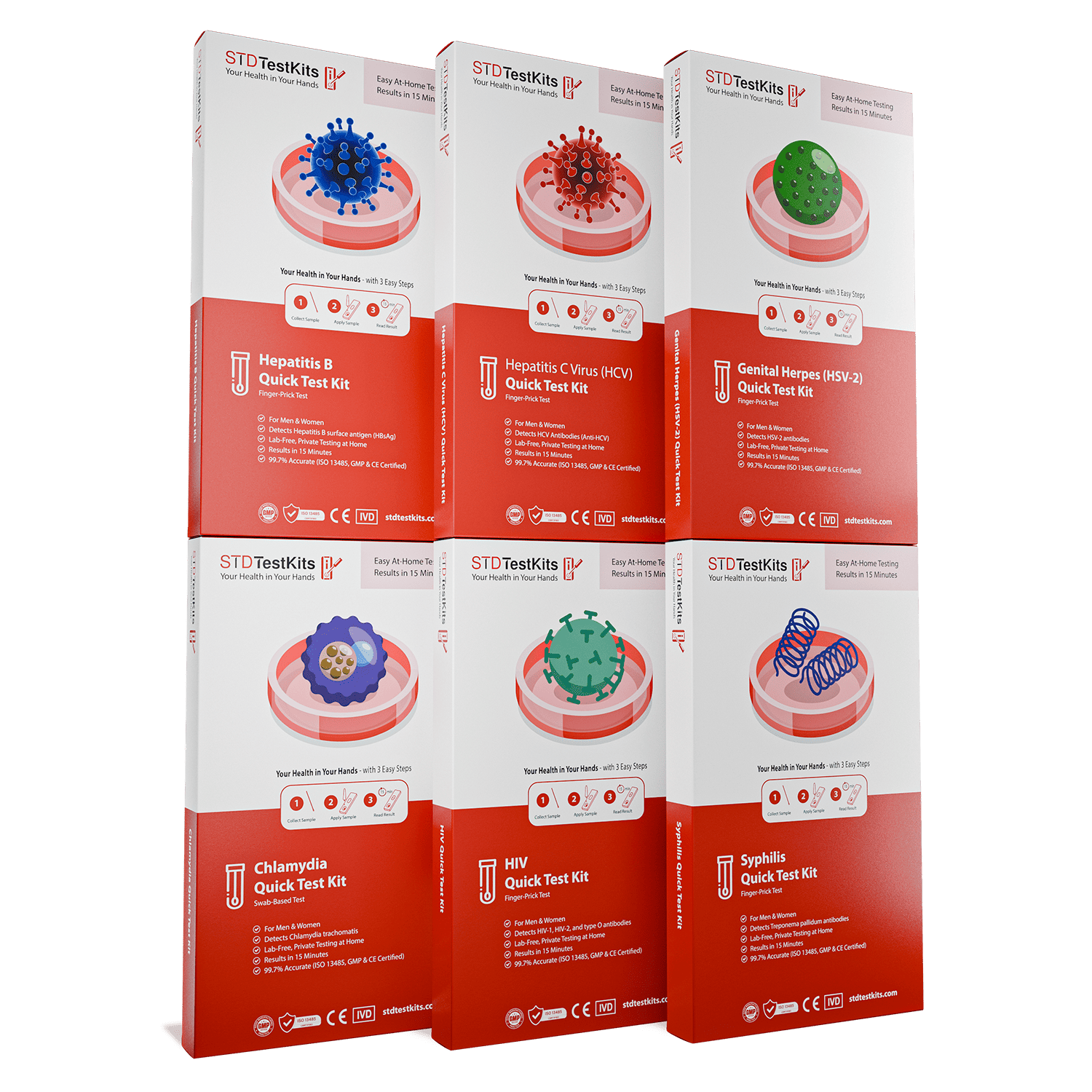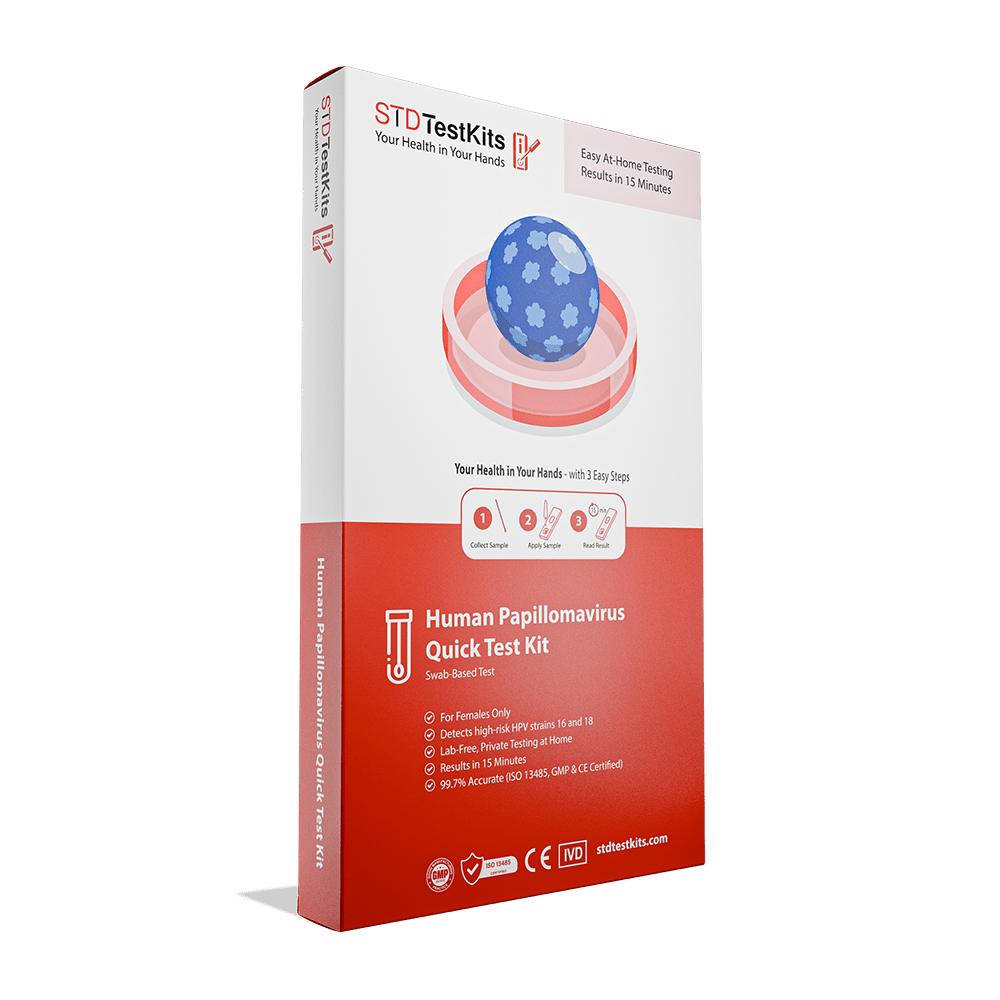The Numbers Don’t Lie Why Non-Sex Workers Often Have Higher Undiagnosed STD Rates
Quick Answer: HIV testing after anal sex depends on the type of test. A PCR test detects HIV earliest, around 10 days after exposure, while most rapid or self-tests give accurate results by 90 days. Bleeding increases risk, so timely testing is essential.
This Isn’t Just a Tear, And It’s Not Just About Gay Men
Let’s start here: anyone can get HIV. But when we talk about anal sex, particularly receptive anal sex, often called “bottoming”, we’re talking about one of the highest-risk sexual activities for HIV transmission. That’s not moralizing. That’s biology. The lining of the rectum is delicate, full of microscopic blood vessels, and far more likely to tear during sex than vaginal tissue. Those small tears, microabrasions, can act like open doors to HIV.
People assume that if it wasn’t rough, if there wasn’t visible blood, the risk is low. That’s part of the problem. You don’t have to see blood to be at risk. HIV doesn’t need a gaping wound. It needs one microscopic crack in the body’s defenses. And when anal sex is involved, regardless of gender or orientation, the chances of that happening are higher.
It’s not about shame. It’s about structure. The rectum simply isn’t designed to take what the vagina can. But sex isn't always about what's “designed”, it's about desire, intimacy, experimentation, and connection. The risk isn’t in who you are. It’s in what you need to know next.

People are also reading: Florida’s HIV Crisis by the Numbers: Who’s Most at Risk and Why It’s Rising
“I Didn’t Bleed Until the Next Day”: Microtears, Myths, and Missed Symptoms
Here’s the part that gets missed in late-night Reddit posts and whispered brunch confessions: HIV rarely comes with a dramatic symptom. Most people don’t wake up drenched in sweat or covered in a rash the day after exposure. In fact, many never feel a thing. Others notice flu-like symptoms, fatigue, sore throat, maybe some swollen glands, weeks later, and chalk it up to stress or bad takeout. The virus is quiet at first. That’s how it survives.
And then there’s the bleeding. People panic when they see blood. But many don’t realize that even the tiniest internal tear, invisible to the eye, is enough to raise your risk. Especially if your partner is living with HIV and not virally suppressed. Especially if you didn’t use a condom. Especially if you were the receptive partner.
Ellie, 28, didn’t think twice until she wiped the next morning and saw red. “I thought maybe I was just sore from trying something new,” she says. “But something felt... off. I had this pit in my stomach that wouldn’t go away.” She waited three weeks before testing, convincing herself she was being dramatic. The result was negative, but barely. She’d tested just early enough to be unsure. She had to wait another month to know for real.
This is the window period, the time between HIV exposure and when a test can reliably detect it. It’s not one-size-fits-all. Different tests work differently. And timing, in this case, really is everything.
The Timeline That Could Save Your Life
So when should you get tested after anal sex?
If the words “I might have been exposed” are already bouncing around your brain, take a breath. Then take this seriously. The fastest, most sensitive test available is a PCR test, also called a nucleic acid test. It looks for HIV’s genetic material itself, not just antibodies, and can detect infection as early as 10 to 33 days post-exposure. But it’s expensive and not always available outside of clinics or hospital settings.
Next comes the fourth-generation antigen/antibody test. This is what most doctors use today. It can detect both antibodies and something called p24 antigen, a protein the body makes early in an HIV infection. It’s usually accurate by 18 to 45 days after exposure. If you go to a lab and have blood drawn from a vein, it’s the gold standard.
Then there’s the test most people actually use: the rapid antibody test. It’s available at-home, easy to buy online, and gives results in minutes. But it only detects antibodies, which the body takes time to develop. It might not catch an infection until three months out. That’s why repeat testing is recommended if you test negative early on.
Bottom line? If it’s been less than two weeks, you’re probably testing too soon. If you’re in the one-to-two month range, a lab test can offer some clarity. And by 90 days, even a self-test will give you answers you can trust. Until then, protect yourself. And consider PEP, the emergency HIV medication you can start within 72 hours of a possible exposure. It’s not too late, but the clock is ticking.
Undetectable Doesn’t Mean Unthinkable
There’s this phrase that floats around dating apps and queer Twitter like gospel: “U=U.” It means Undetectable = Untransmittable, and it’s backed by mountains of science. If someone living with HIV is on treatment and their viral load is undetectable, they can’t pass the virus on during sex. Not won’t. Can’t. That’s a revolution in public health. But it’s also become a loophole people use to justify skipping condoms, or skipping tests altogether.
Here’s the nuance: U=U is real. But you only get there if you know your status and stick to your meds. If someone tells you they’re “probably undetectable” or “I was last time I checked,” that’s not science. That’s a gamble. And if you’re the receptive partner during anal sex, the one with more biological risk, you’re the one holding the bet.
Let’s be real: sex isn’t always scheduled, planned, or clinical. Sometimes things slip. A condom breaks. You run out of lube. You’re drunk and forget to ask. You trust someone too quickly, or mistrust your own gut too long. That’s human. What matters is what you do after. Testing isn’t about calling someone out. It’s about keeping your body safe for the next time.
“I Was Too Embarrassed to Get Tested”: What Shame Really Costs
Marcus, 24, waited nearly six months before getting tested after a one-time hookup left him with a bleeding fissure.
“It wasn’t that I didn’t care,” he says. “It’s that I didn’t want to say out loud what happened. Even to myself.”
He’d bottomed for the first time. It hurt more than he expected. There was blood. There was no condom. And there was silence. “I didn’t want to be that stereotype,” he says. “So I waited. And every day I didn’t test, the fear got worse.”
Shame doesn’t just delay action, it changes our memory. It rewrites what we tell ourselves about the night. “Maybe he didn’t finish inside me.” “Maybe it was just a hemorrhoid.” “Maybe I’m overreacting.” But the science doesn’t care about our self-protection scripts. HIV replicates regardless of our rationalizations. And when we wait too long to test, we don’t just risk our own health, we risk passing that uncertainty to the next person we sleep with.
Shame also shows up in more subtle ways: the queer guy who won’t ask his partner’s status because it “kills the vibe.” The woman who tried anal sex with her boyfriend for the first time and now doesn’t know if it “counts” as risky. The nonbinary person who avoids clinics because they were misgendered at the last one. These stories are everywhere, and they all lead to the same crossroads: do I wait and wonder, or do I ask my body for the truth?
The Psychological Hell of Waiting for Results
No one talks enough about the days between testing and knowing. Those days are a special kind of purgatory. Your brain plays every moment of the encounter on loop, what was said, what wasn’t, how you positioned your body, whether that was blood or just irritation. You stalk HIV forums, switch between calm rationality and full-blown spirals, and Google things like “can you get HIV from precum if there was a tear.” You tell yourself the odds are low, and then remind yourself people win the lottery every day.
It’s not just the waiting. It’s what waiting does to your self-esteem. For some, it brings up old trauma. For others, it’s the first time they’ve felt unsafe in their own body. And yet, in that waiting is a strange kind of power. A wake-up call. A moment of clarity about what you want, what you’ll allow, what you’ll protect moving forward. Many people who’ve been through this experience describe it as life-changing, not because they tested positive, but because they started taking their health seriously afterward. And because they stopped letting shame write the script.
Knowing is better than guessing. Even if you’re scared of the result. Especially if you’re scared of the result. That fear? It’s trying to tell you something. Listen. Then act.

People are also reading: Can You Get Chlamydia in Your Throat? Yes, Here’s What It Feels Like
Why the Butt Lets HIV In Easier, And Why That Matters for Testing
If you’ve ever wondered why HIV risk is so much higher during anal sex, here’s the science stripped down. The lining of the rectum is just a single layer of thin, fragile cells. Unlike the vagina, which has multiple layers of tougher skin and natural lubrication, the rectum has no such defenses. When penetration happens, especially without enough lube or with high friction, it’s incredibly easy for that lining to tear.
Picture this: a stretched balloon versus a piece of leather. The balloon bursts under pressure; the leather stretches. That’s your rectum compared to a vagina. Microtears in rectal tissue might not be visible, but under a microscope, they’re wide-open welcome mats for viruses, especially a virus like HIV that targets immune cells. And guess what? The rectum is rich with those very cells. HIV doesn’t just get in, it gets cozy. Fast.
This is where test timing becomes critical. If HIV enters the bloodstream through those tiny tears, your body starts responding almost immediately. But different tests pick up different signals. The PCR test, also known as the NAT or RNA test, detects the virus itself. It’s the first to show positive, often within 10 to 14 days. Then comes the fourth-generation test, which detects both the HIV antigen (p24 protein) and antibodies. It’s the most widely used lab test, usually accurate by 18 to 45 days post-exposure.
Finally, there’s the antibody-only test. Most at-home kits fall into this category. These rely on your immune system’s response to HIV, which can take longer to show up, sometimes as long as three months. That’s why the Centers for Disease Control and Prevention (CDC) recommends a second test at 90 days if your initial result is negative but you had a high-risk exposure. This isn’t paranoia. It’s protocol.
What If the Condom Broke? Or You Didn’t Use One at All?
It’s one of the most common confessions people make after sex that felt fine at the time, but suddenly doesn’t in hindsight: “The condom slipped off.” Or “I think it broke but he didn’t say anything.” Or “We didn’t use one… but he said he was clean.” If this is you, you’re not alone, and you’re not doomed either. But the clock does start ticking.
If it’s been less than 72 hours, you can still take action with PEP, Post-Exposure Prophylaxis. It’s a 28-day course of antiretroviral medications that, when taken correctly, can prevent HIV from taking hold in your body. But it’s only effective if started within three days of the encounter. The sooner, the better. Most emergency rooms, urgent cares, and LGBTQ+ clinics can start you on PEP fast, often after a quick HIV test to make sure you’re not already positive. You’ll then test again at 4–6 weeks and again at 3 months to confirm.
Already past the 72-hour mark? You’ll need to shift focus from prevention to detection. Start with a lab-based antigen/antibody test around the 3 to 4-week mark. If negative, retest at 90 days with a self-test or another lab test. This layered approach isn’t about overkill, it’s about accounting for the window period, and giving your body enough time to show what’s really going on. HIV isn’t detectable the moment it enters the body. It needs time to replicate. And tests need time to find it.
This FDA-approved at-home HIV combo test is a solid option once you’re past the window. It checks for multiple STDs in one go, giving you clarity on more than just HIV. Because here’s the kicker: if you’re worried about HIV, you should also be thinking about Syphilis, Chlamydia, Gonorrhea, and Hepatitis B. The risk factors overlap. So does the anxiety. One test can give you more than one answer.
Lube, Queer Sex, and What Nobody Tells You About Protection
Let’s talk about lube. It’s not just a comfort tool, it’s a literal barrier against tears and friction. Water-based and silicone-based lubes reduce your chances of microabrasions, which means fewer pathways for HIV to enter. But no, lube alone doesn’t “block” HIV. It supports condoms. It protects tissue. It helps. But it isn’t magic.
Same goes for the idea that you’re “safe” if it didn’t hurt or bleed. That’s a dangerous myth. Pain isn’t a prerequisite for risk. Neither is visible damage. The rectum can be injured in ways you don’t notice until it’s too late. And the people most at risk? They’re often the ones who’ve been told to stay quiet about their sex lives, to hide their pleasure, or to avoid talking about anal sex altogether because it’s “taboo.”
But sex positivity isn’t just about permission, it’s about protection. About knowing how your body works. About asking partners the hard questions. And yes, about getting tested even when you’d rather not know. Because knowing is freedom. Knowing is peace of mind. And knowing lets you keep saying yes to the sex you want, without dragging anxiety into bed with you.
FAQs
1. I bled a little after anal, do I need to panic?
No panic necessary. But yes, bleeding, especially from inside, means the lining of your rectum was likely torn a bit. That opens the door (literally) for things like HIV to enter more easily. If the sex was unprotected or your partner’s status is unknown, get tested. Not out of fear, out of respect for your peace of mind.
2. How soon can I test for HIV after bottoming?
Depends on the test. A PCR test is the overachiever, it can detect HIV in 10–14 days. A fourth-gen lab test shows results in about 3–6 weeks. At-home tests need more time, closer to the 90-day mark. Think of it like developing a photo: test too early and the picture isn’t finished yet.
3. I didn’t finish inside him. Am I still at risk?
Yes. Ejaculation isn’t a requirement for HIV transmission. Pre-cum can carry the virus, and if there were microtears (which are super common in anal sex), the risk goes up. It's not about being dramatic, it's about knowing how bodies actually work.
4. My partner says he’s undetectable. Should I still test?
If he really is undetectable and on consistent treatment, the risk is virtually zero. That’s the beauty of U=U. But unless you saw the labs yourself, and unless he’s been tested recently, it’s okay to protect yourself by testing too. Trust and sexual health go hand-in-hand, literally.
5. What if it was just one time?
One time is enough. HIV doesn’t need a repeat invitation. That said, if the sex was protected and there was no visible bleeding or known risk, the chances are low. But if something felt off, or if you can’t shake the worry, that’s your body asking for clarity. Listen to it.
6. Is lube enough to protect me?
Lube helps, 100%. It reduces tearing, which reduces risk. But no, lube alone doesn’t block HIV. Use it with condoms, not instead of them. And choose the right kind (water- or silicone-based) if you're using latex. Oil-based lubes break condoms, and broken condoms don’t protect anybody.
7. How long should I wait before I use an at-home HIV test?
Wait at least 90 days for the most accurate results. Earlier than that and you’re in the gray zone, your body might not have produced enough antibodies to show up yet. If you’re anxious and it’s been less than 6 weeks, go to a clinic for a lab test instead. You deserve real answers, not maybe’s.
8. I took a test at 3 weeks and it was negative, am I safe?
You’re on a good track, but don’t close the case just yet. A negative result at 3 weeks is encouraging, especially with a lab test, but follow-up testing is key. Think of it like a two-part movie, you can’t leave before the credits roll and say you know how it ends.
9. Should I be testing for other STDs too?
Absolutely. If you had unprotected anal sex, you're at risk for more than just HIV. Chlamydia, Gonorrhea, Syphilis, Hep B, they can all transmit the same way. A combo test knocks them all out in one go, so you don’t have to keep guessing what that burning or discharge is.
10. I’m scared. What if the result is positive?
Then you’re not alone. And you’re not broken. Millions of people are living full, beautiful lives with HIV. Treatment today is so effective, you can reach undetectable levels and never pass it to a partner. But none of that can start until you know. And knowing? That’s the bravest thing you can do right now.
You Deserve Answers, Not Assumptions
If you’ve made it this far, you’re likely carrying fear, uncertainty, or shame, maybe all three. But here’s the truth: testing isn’t about confirming the worst. It’s about giving yourself the dignity of clarity. It’s about refusing to let one night, one tear, or one risk live rent-free in your mind for weeks or months.
Whether your sex life is spontaneous, structured, kinky, queer, vanilla, or still a work in progress, you deserve to navigate it with confidence, not guesswork. There’s power in knowing your status. Power in protecting your partners. And power in letting yourself move forward without fear.
Don’t wait and wonder, get the clarity you deserve. This at-home combo test kit checks for the most common STDs discreetly and quickly.
Sources
1. NIH: Understanding HIV Testing
3. Cleveland Clinic: HIV Testing Guide







